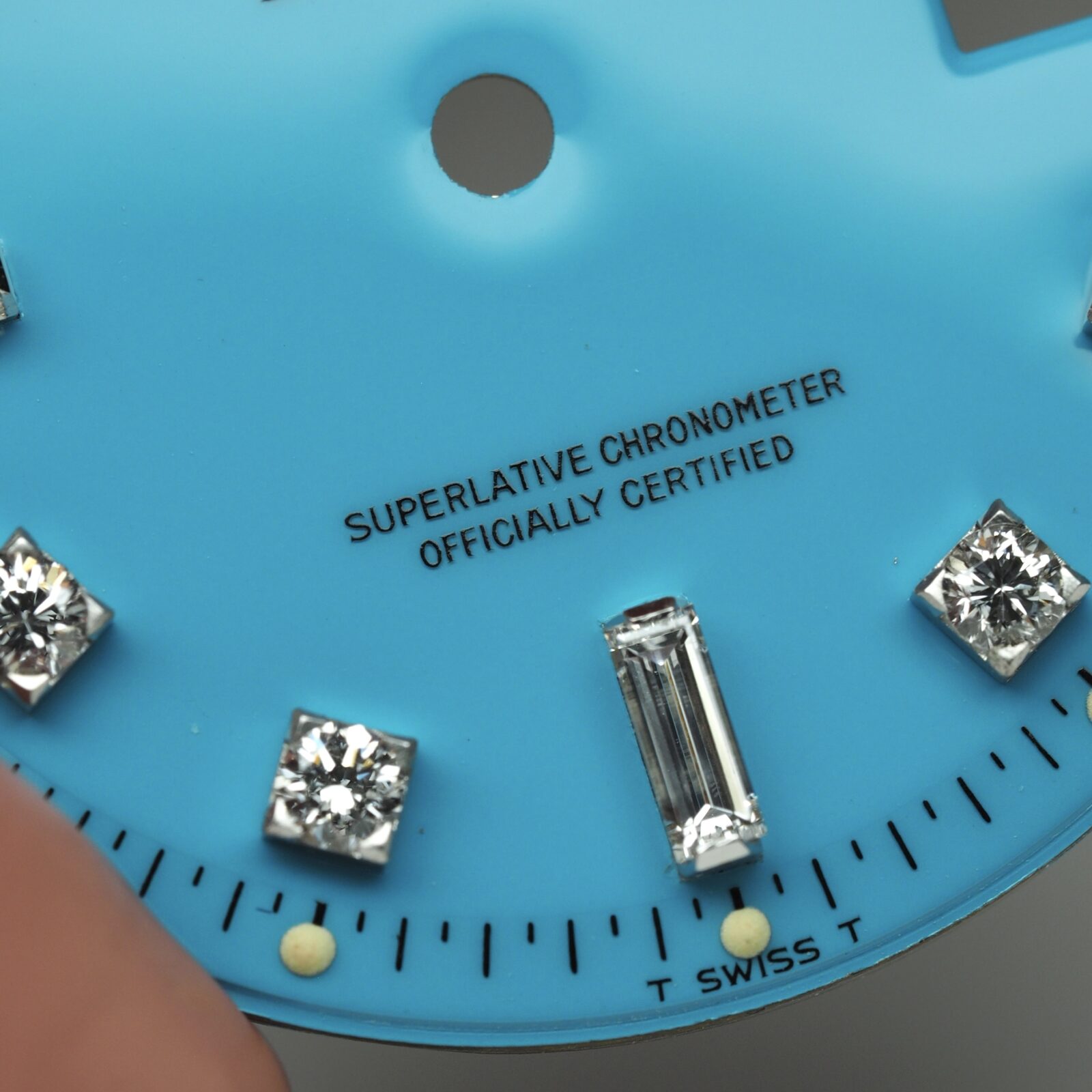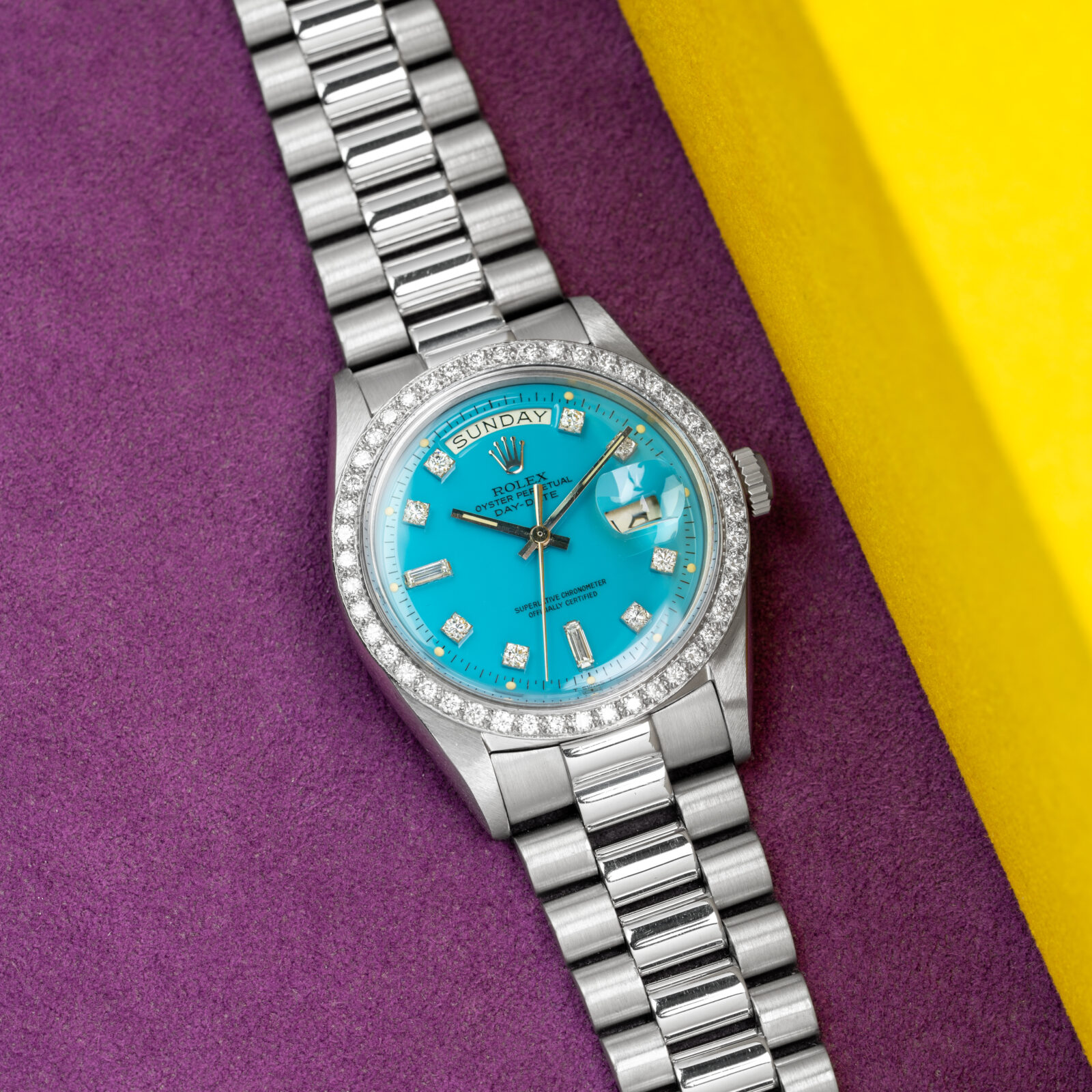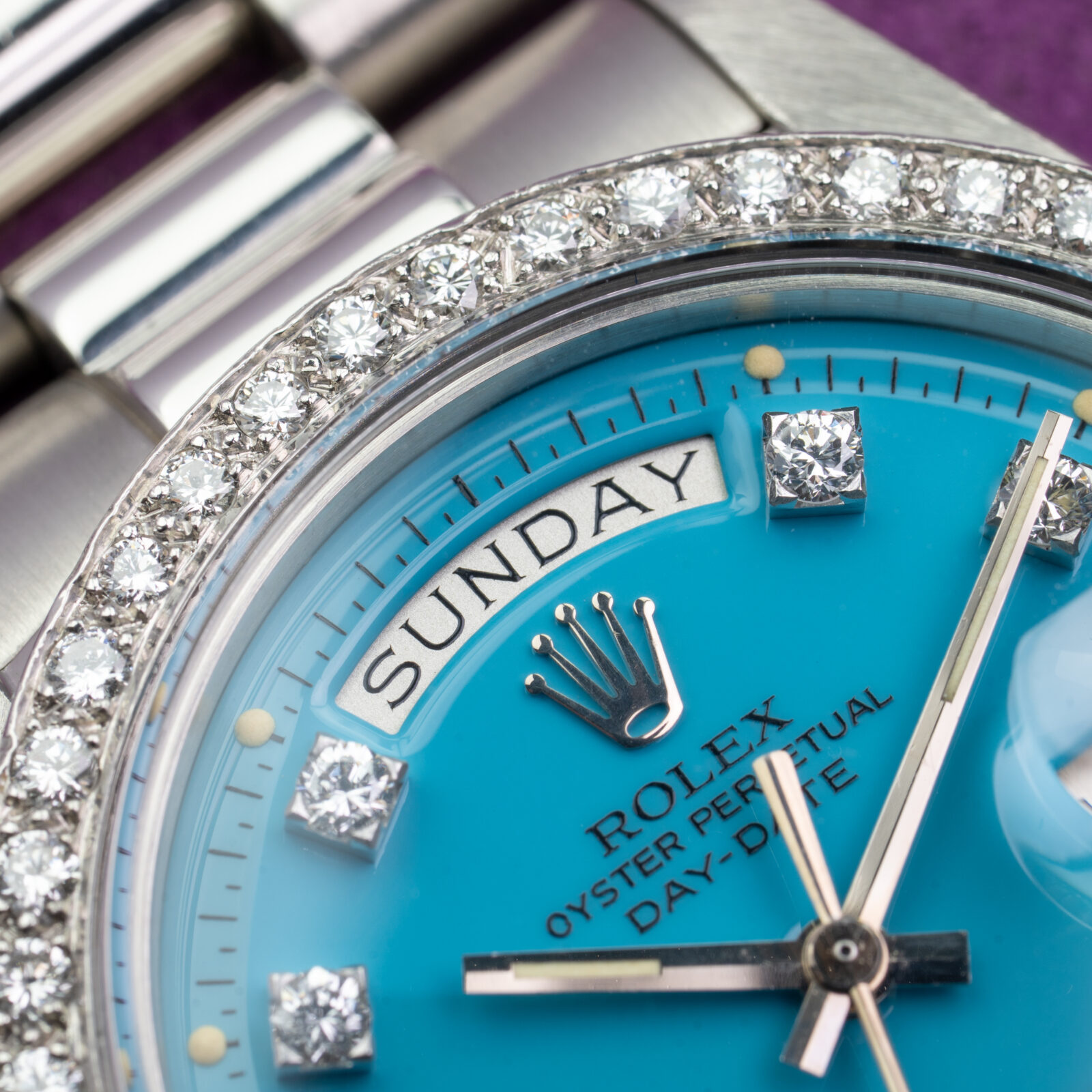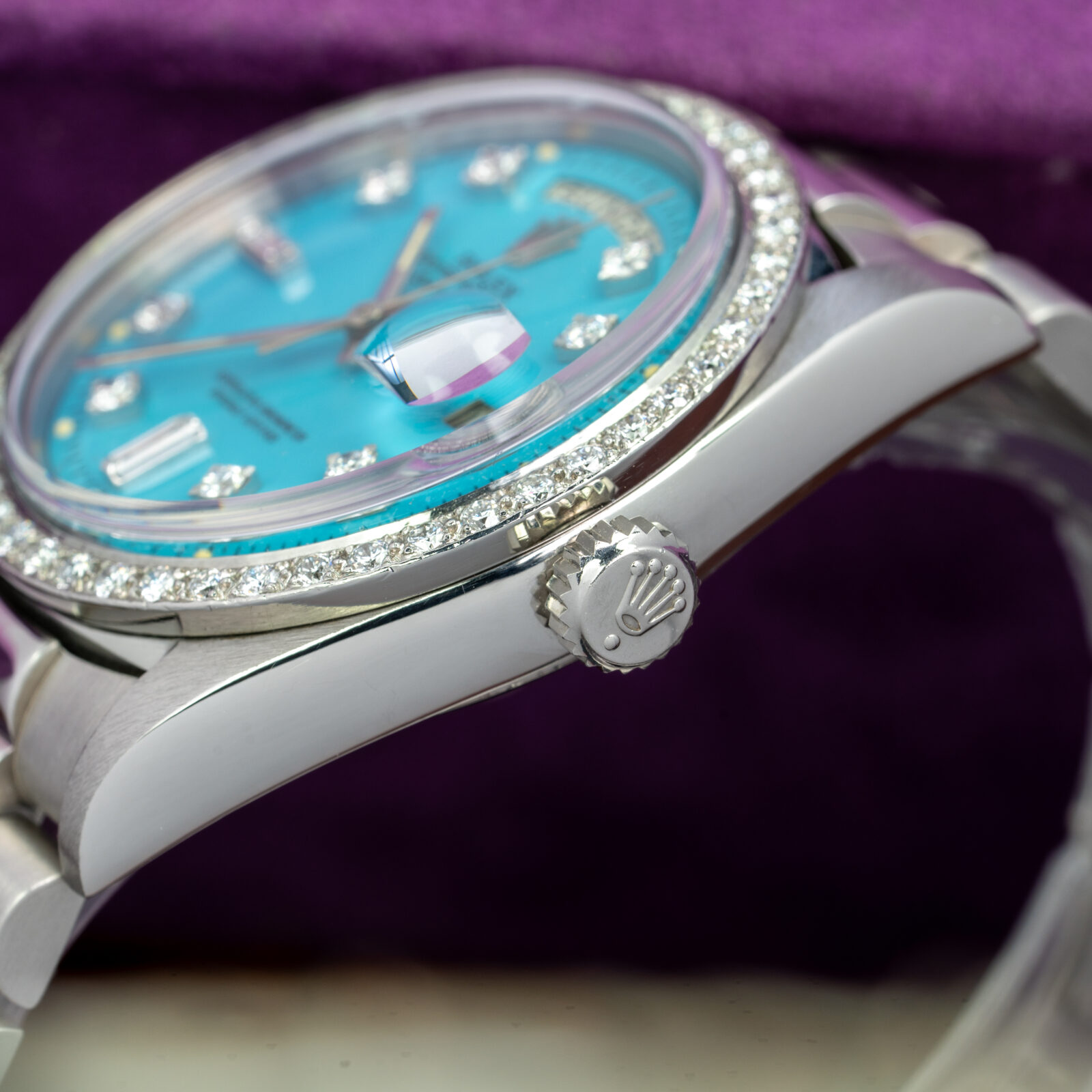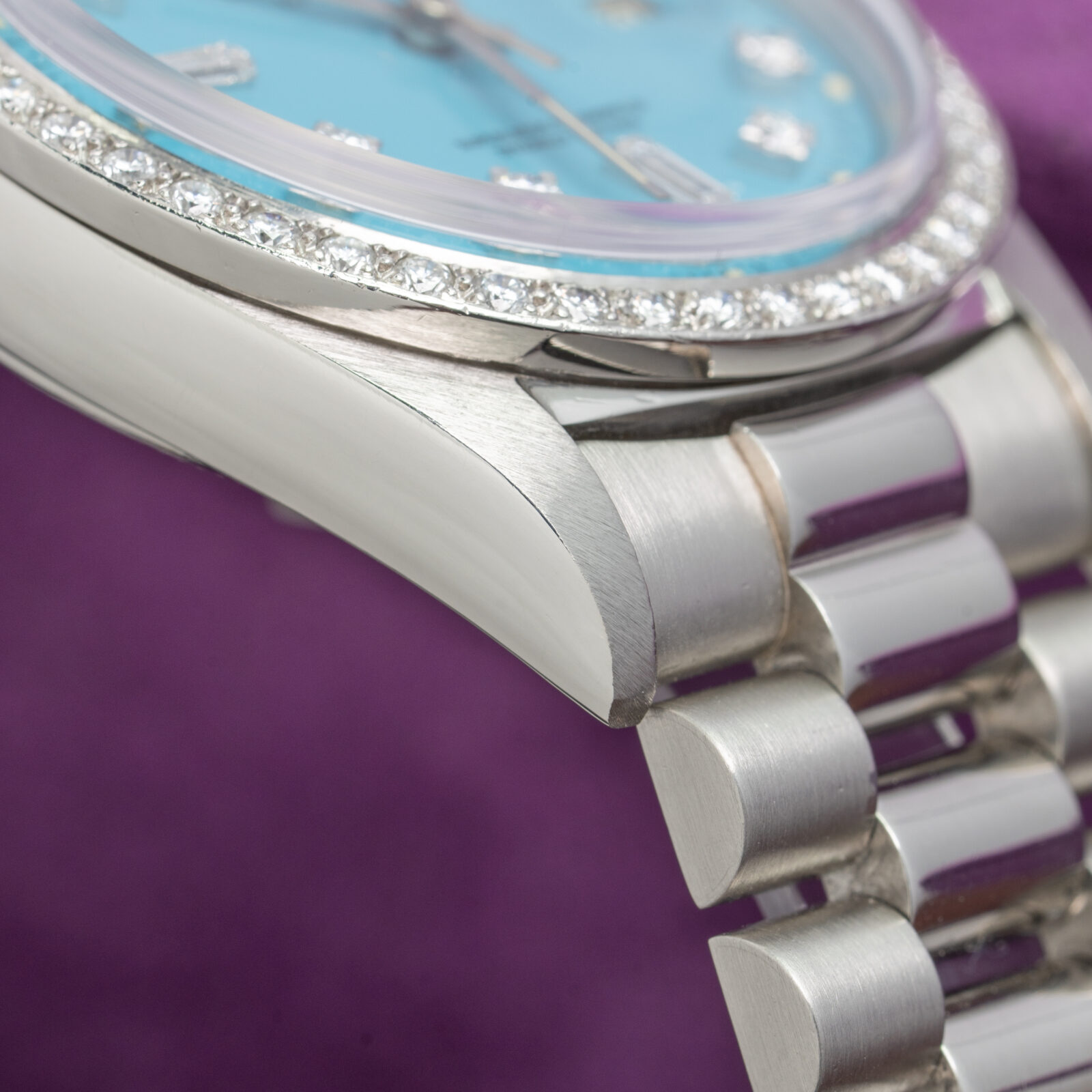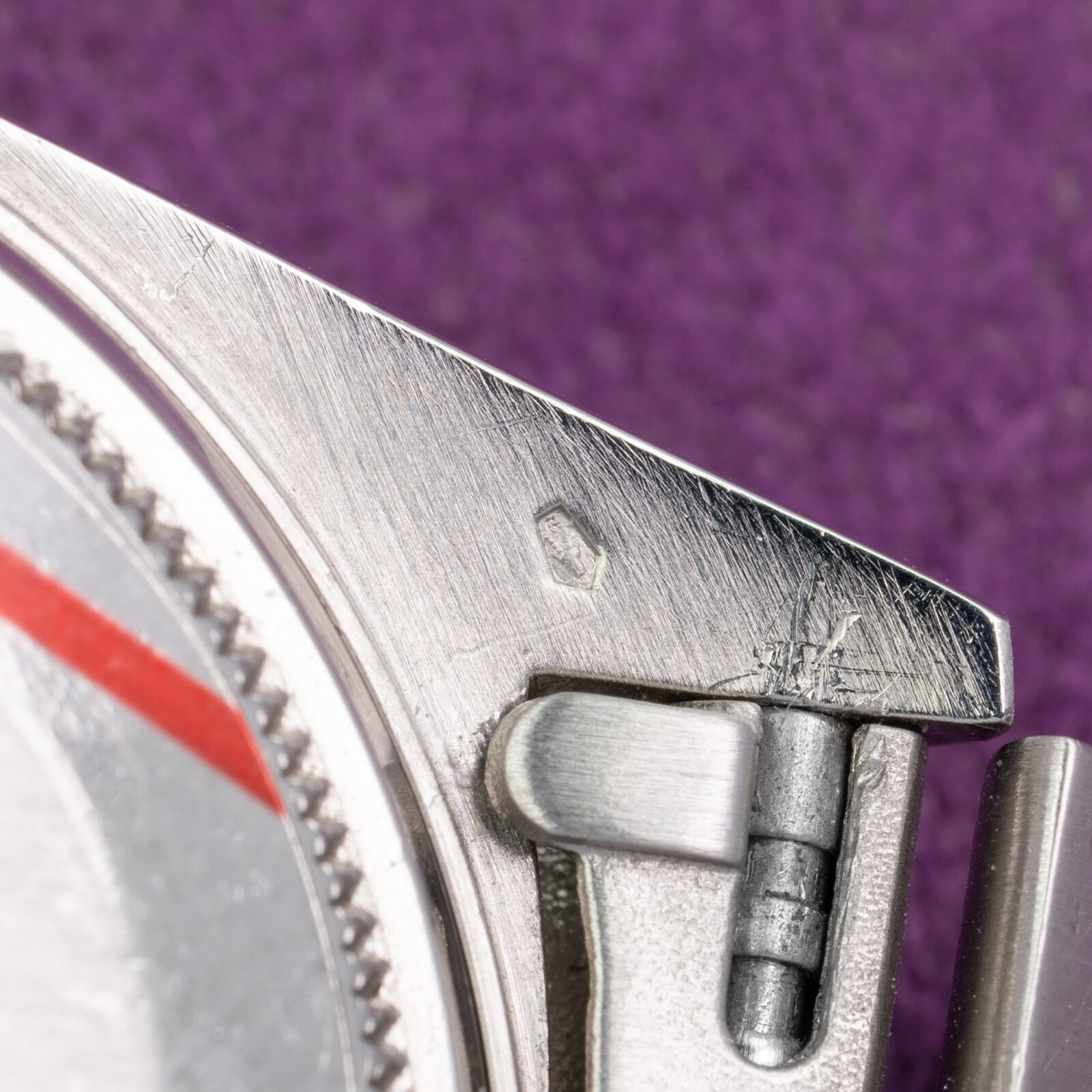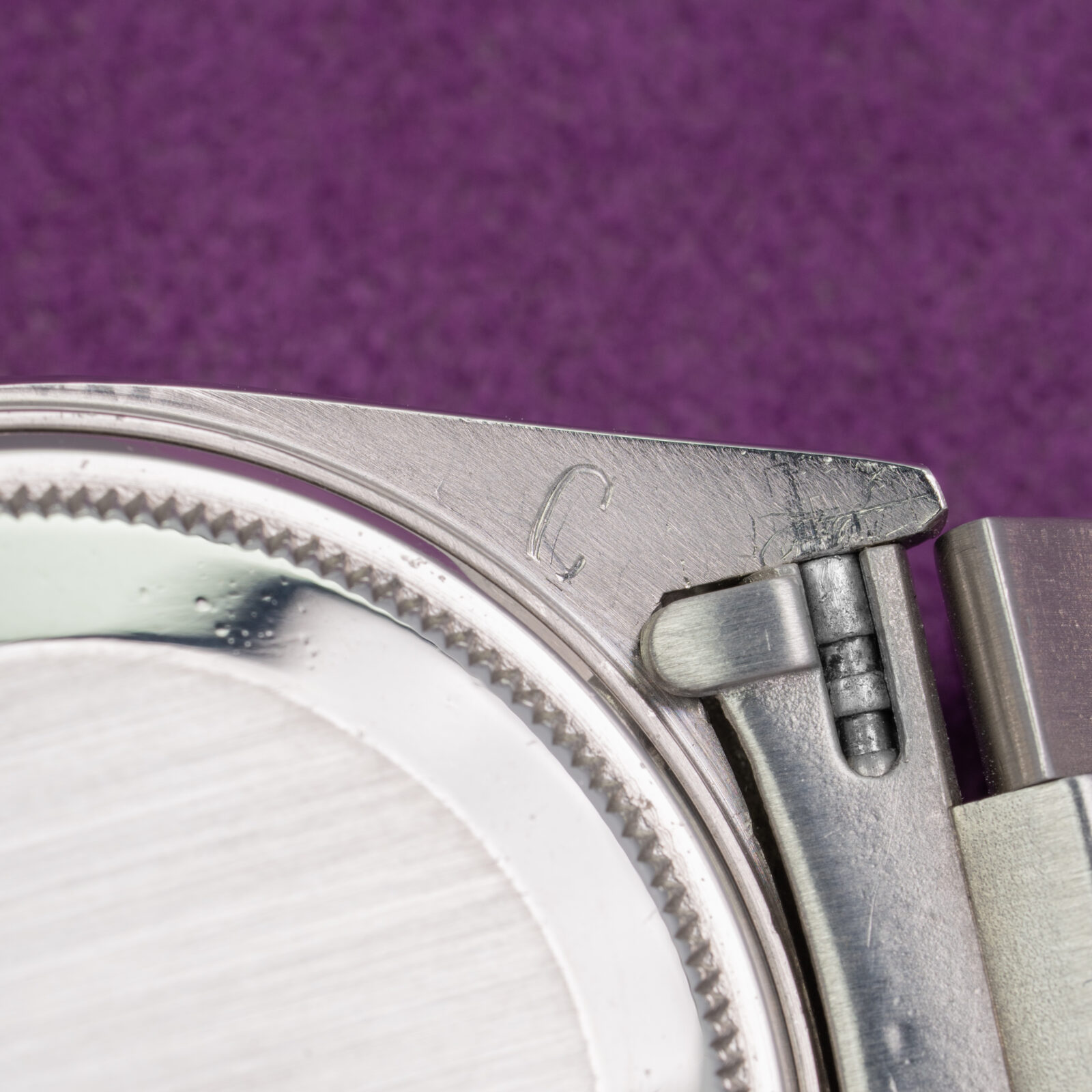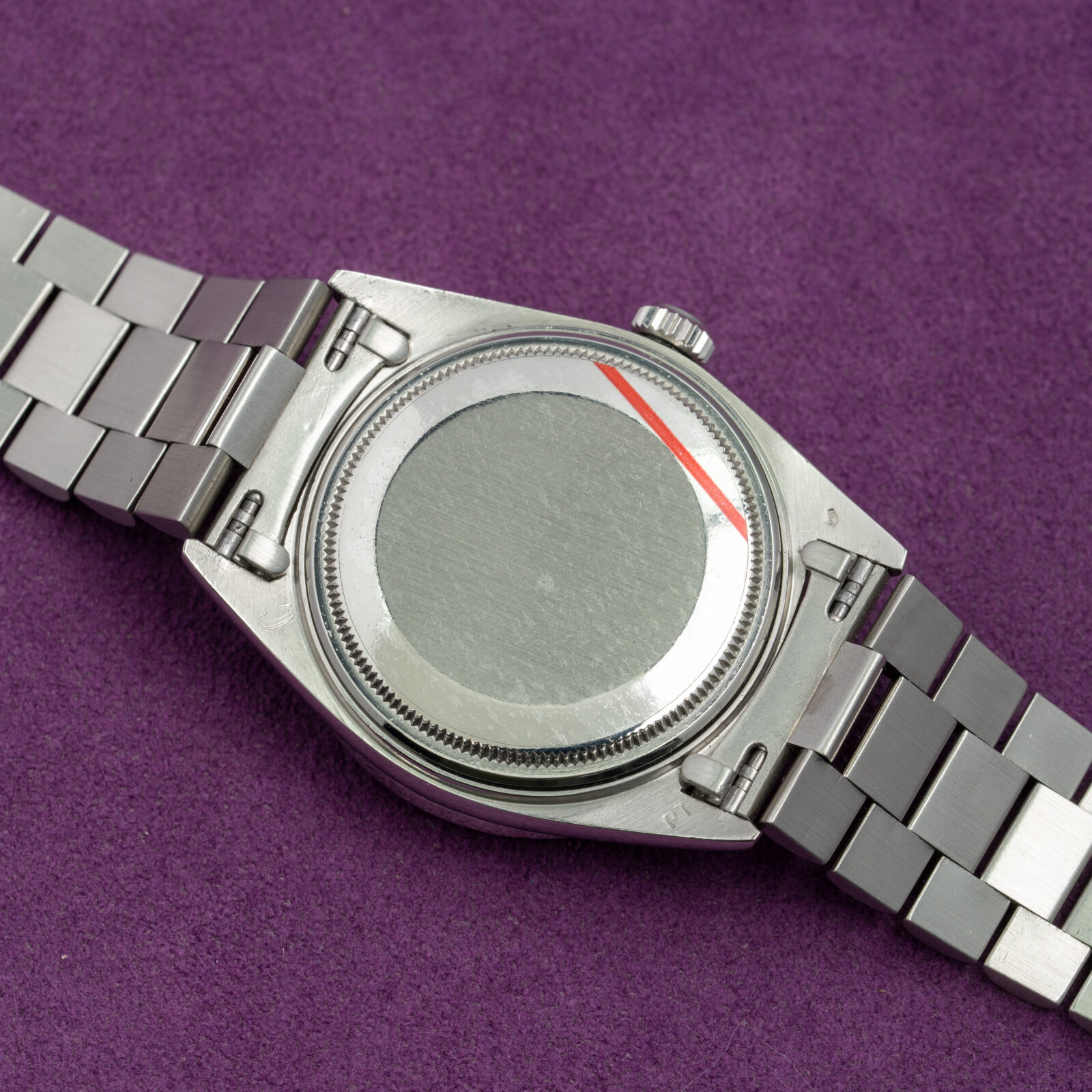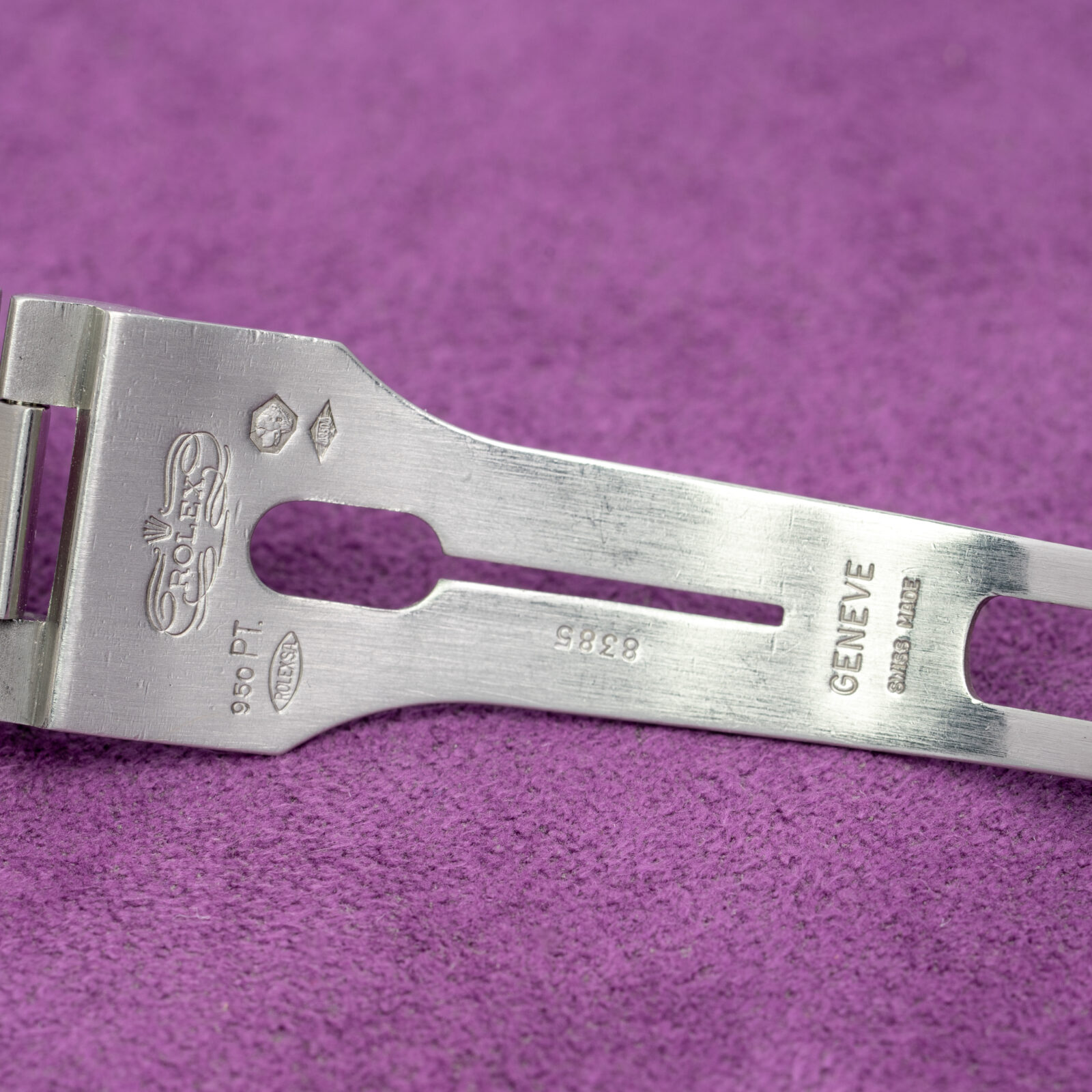

1804
Spectacular Stella with larger diamond markers, principally made for a platinum Day-Date; like this 1804.
Before getting to the eye-catching coloured dial, we start with the 36mm housing. To find a Platinum Day-Date from the 60's or 70's is a tough assignment in and of itself. Whether it's a 1802 (smooth bezel) or an 1804 (diamond set bezel), rather few were ever conceived in this most precious of metals. Besides the usual hallmarks, to flaunt its 950 purity in alloy, there is an additional C on the bottom side of the left lug. Something we have not encountered before, nor know what this refers to; if anything at all. The overall condition of the case is excellent and the correct thick bezel is lavishly showing off its brilliance. The Platinum President with concealed clasp remains strong.
Even though the packaging is grand, the star of the show is -without a shadow of a doubt- this incredible lacquered dial. An original and pristine Stella is majestic regardless, but not all are created equal. Quite literally, since the paint was mixed by hand so each and everyone differ slightly. In this case, a vibrant turquoise blue tint is the background for the thick black text. But most notable, the diamond markers are larger than usual. This has been common practice for platinum Rolex' in the 20st century. But since there are hardly any 4-digit Day-Date's in this metal, and even less Stella dials, to find this combination is exceedingly rare. To the best of our knowledge merely a handful of Stella's are cased in platinum and thus display these impressively sized stones.
Additionally, it is important to examine the condition of this "canvas". To most collectors, the 70's are the prime era for cherished Stella dials, mainly because of the depth provided by the "pie-pan" profile. The aesthetics of the glossy surface is enjoyed best with the edged periphery of the dial and around the day and date window. But also pay attention to the subtle dimples of the glaze at the centre and around the hour markers. Oftentimes, here is where cracks are formed, yet ours is in superlative state and lacks any such defects or even hairlines. Unsurprisingly the lume-plots, containing tritium zinc sulphide, are all still intact and moreover aged to an appealing and contrasting yellowish colour.
Many Stella dials have crossed our path, but this glorious specimen is so exciting that it blows most others out of the water. 1972 Has never looked this good.




